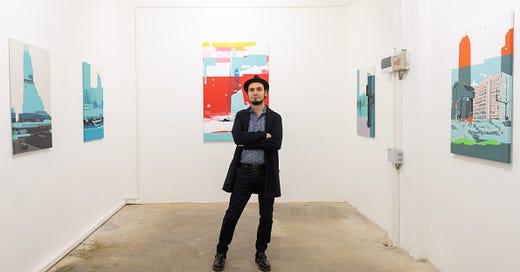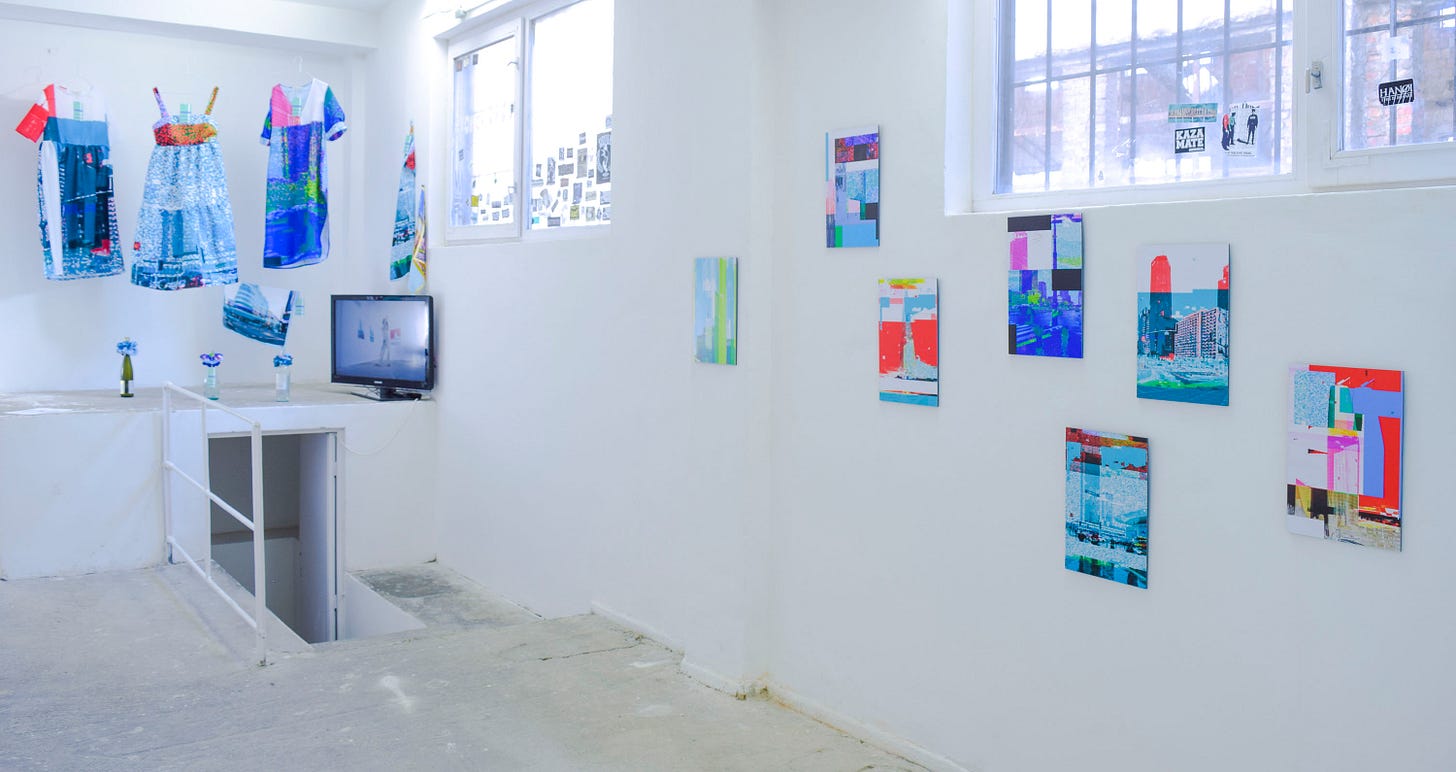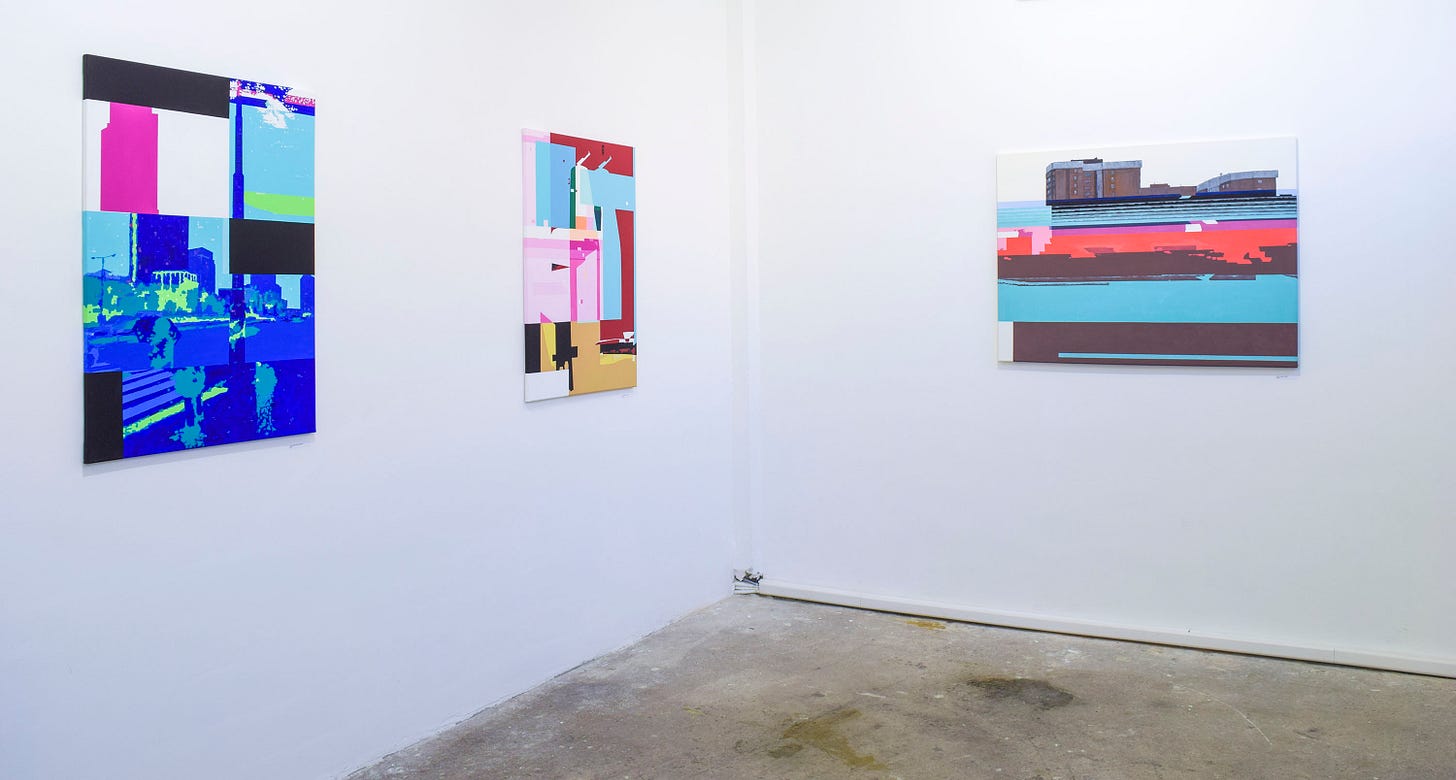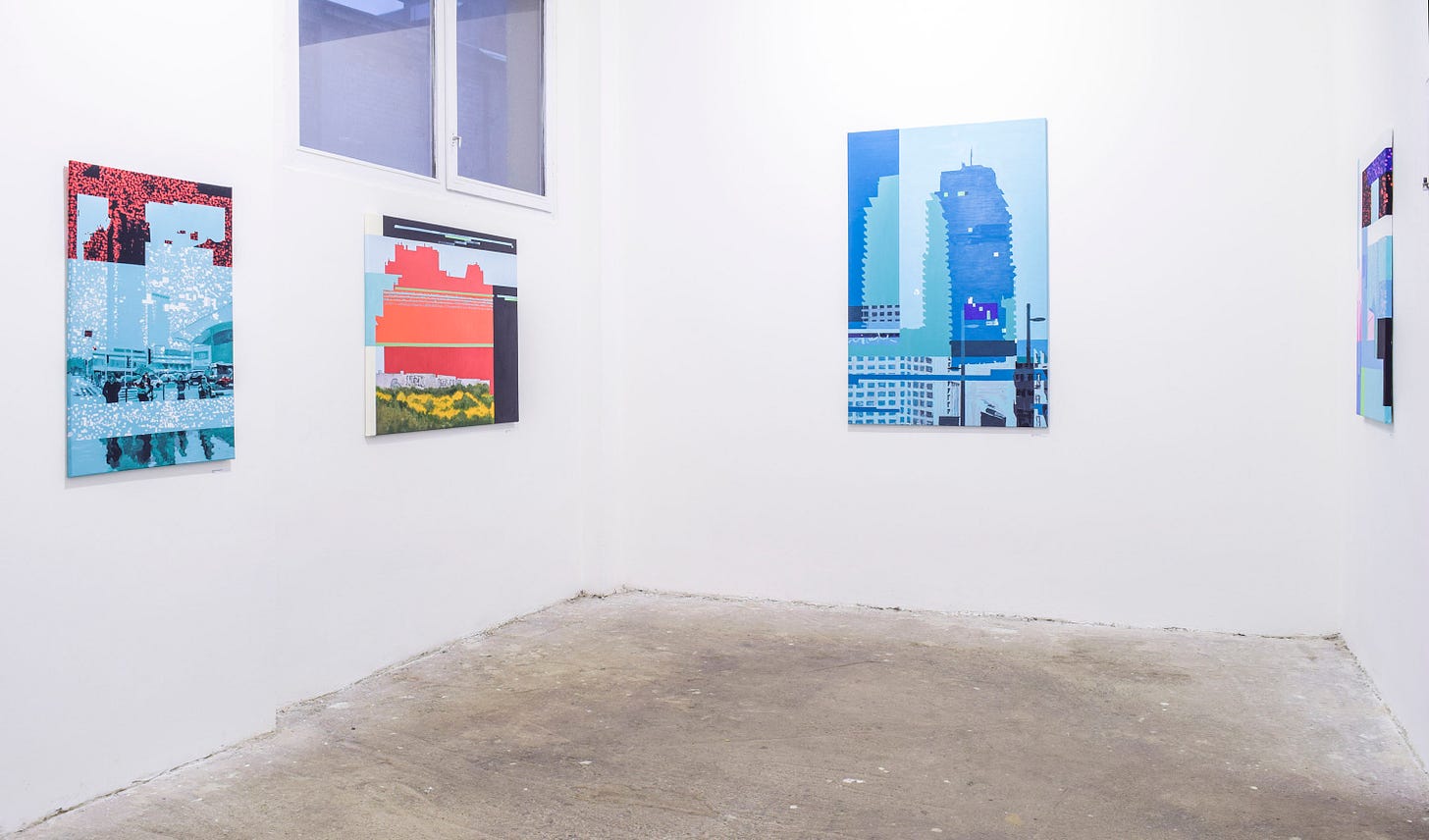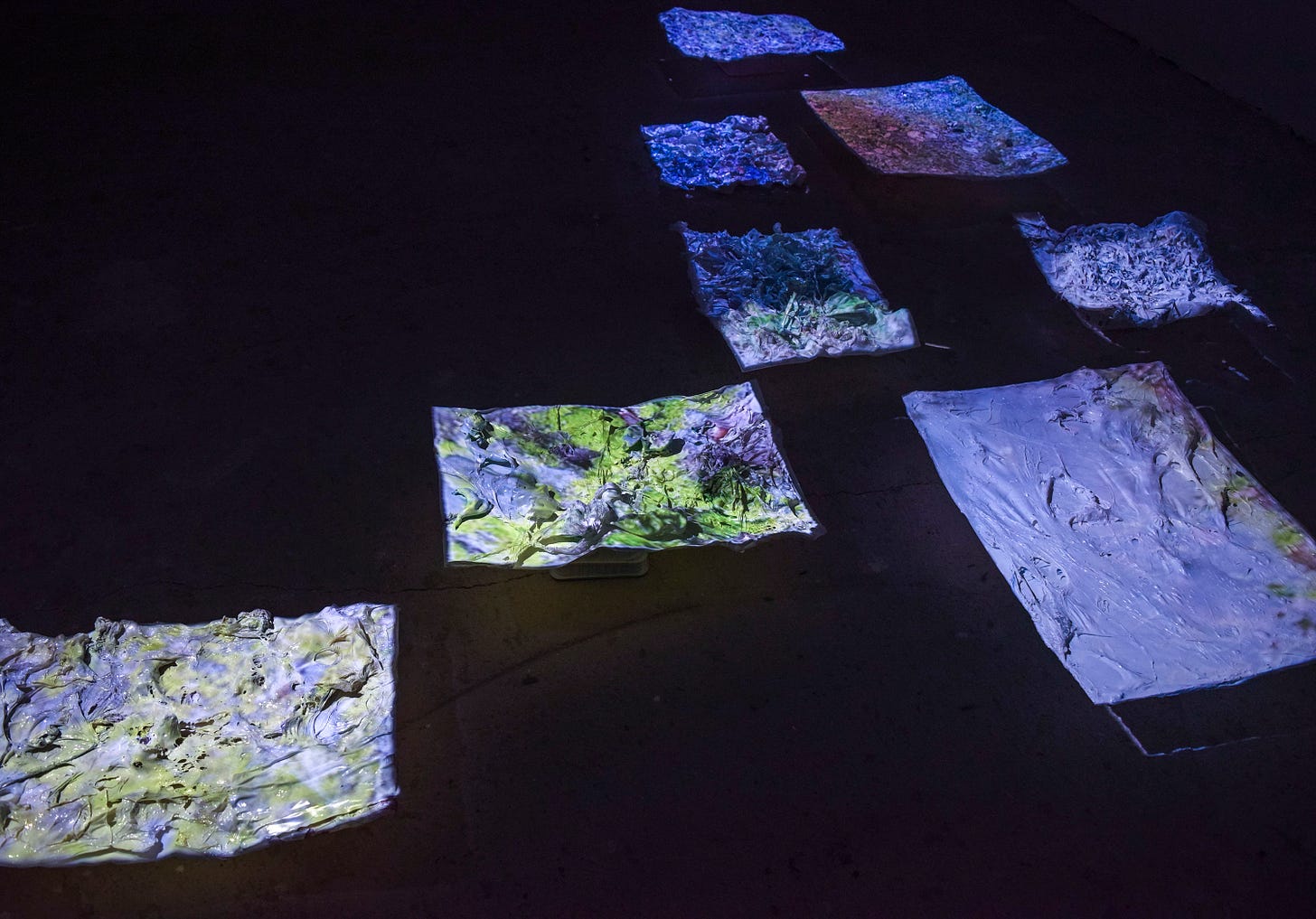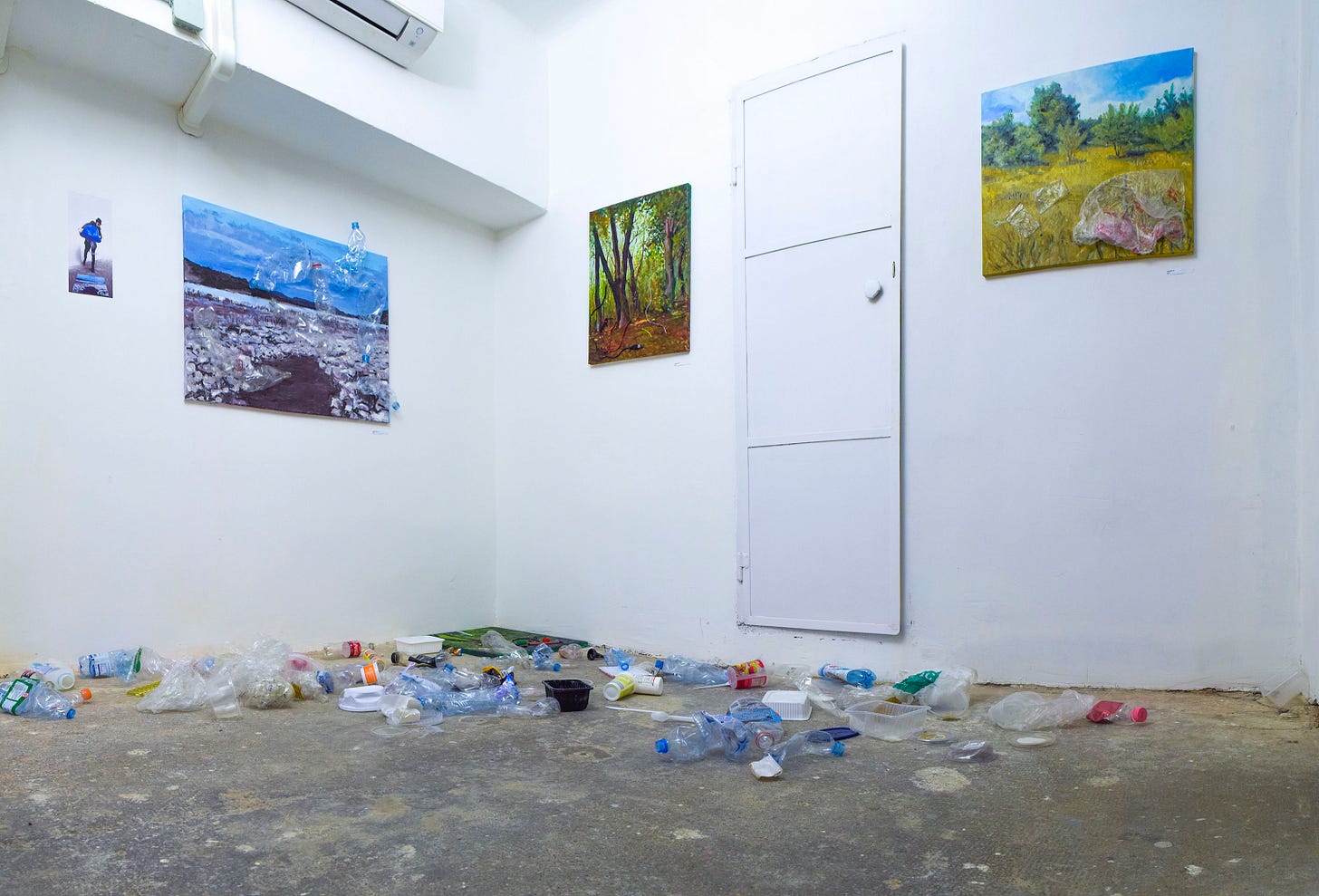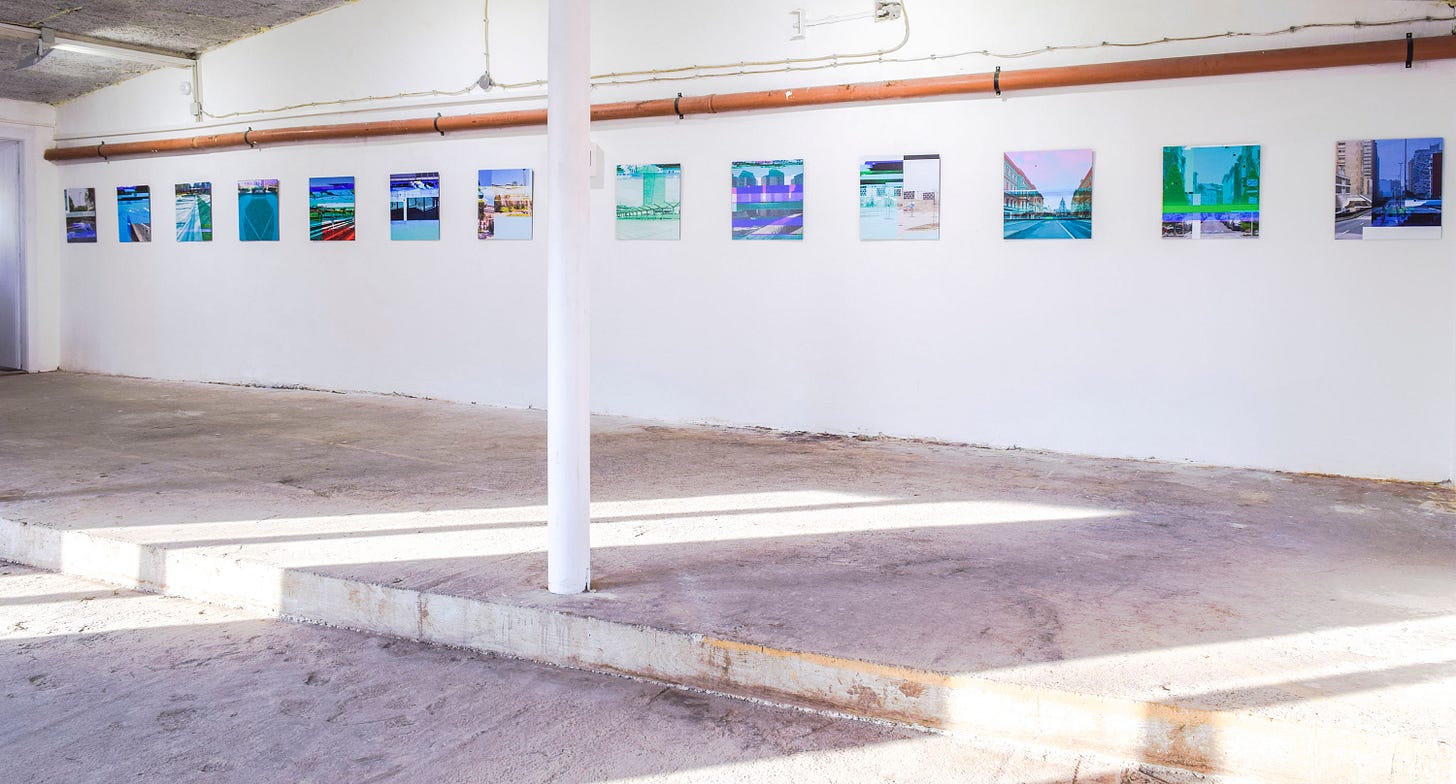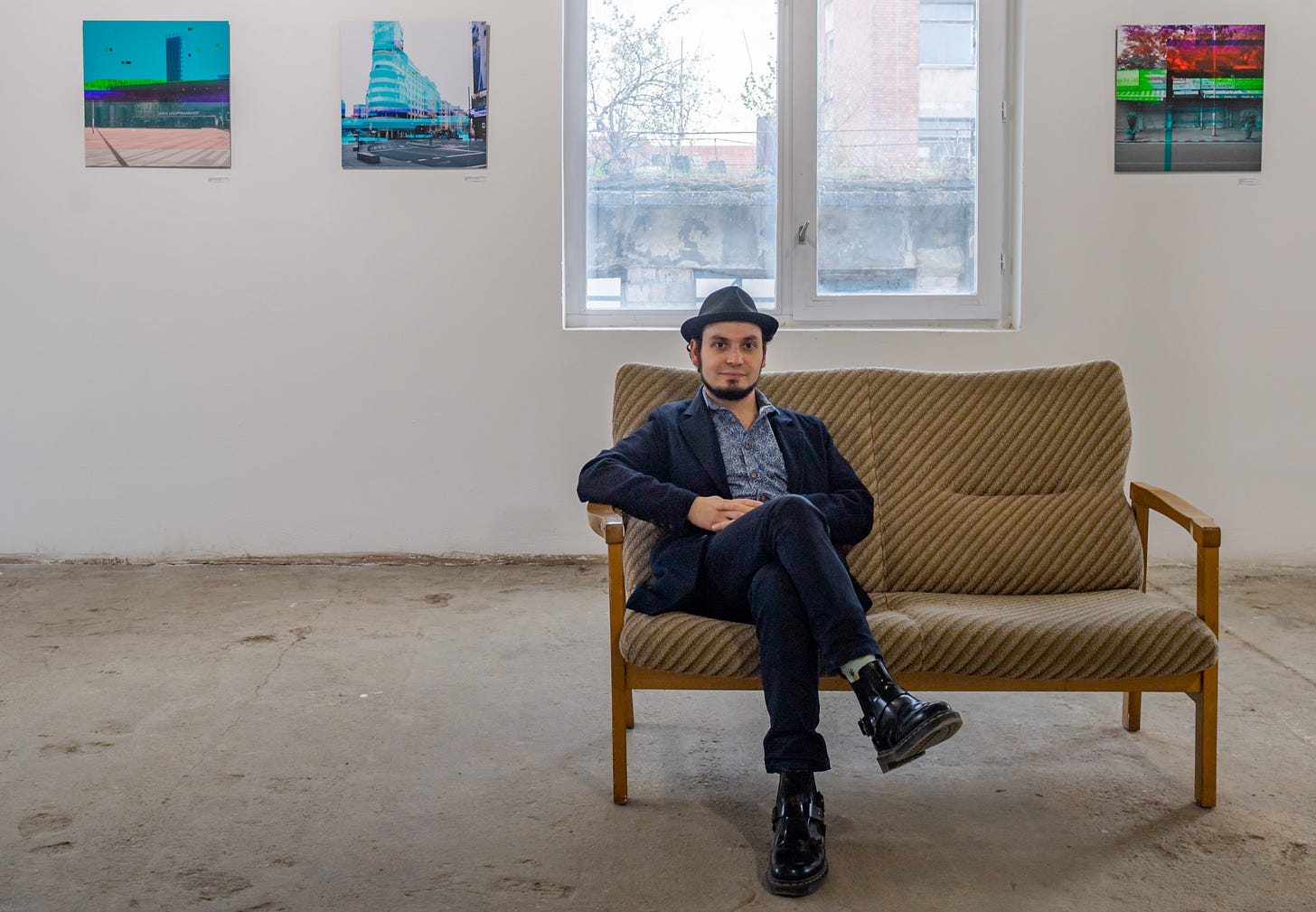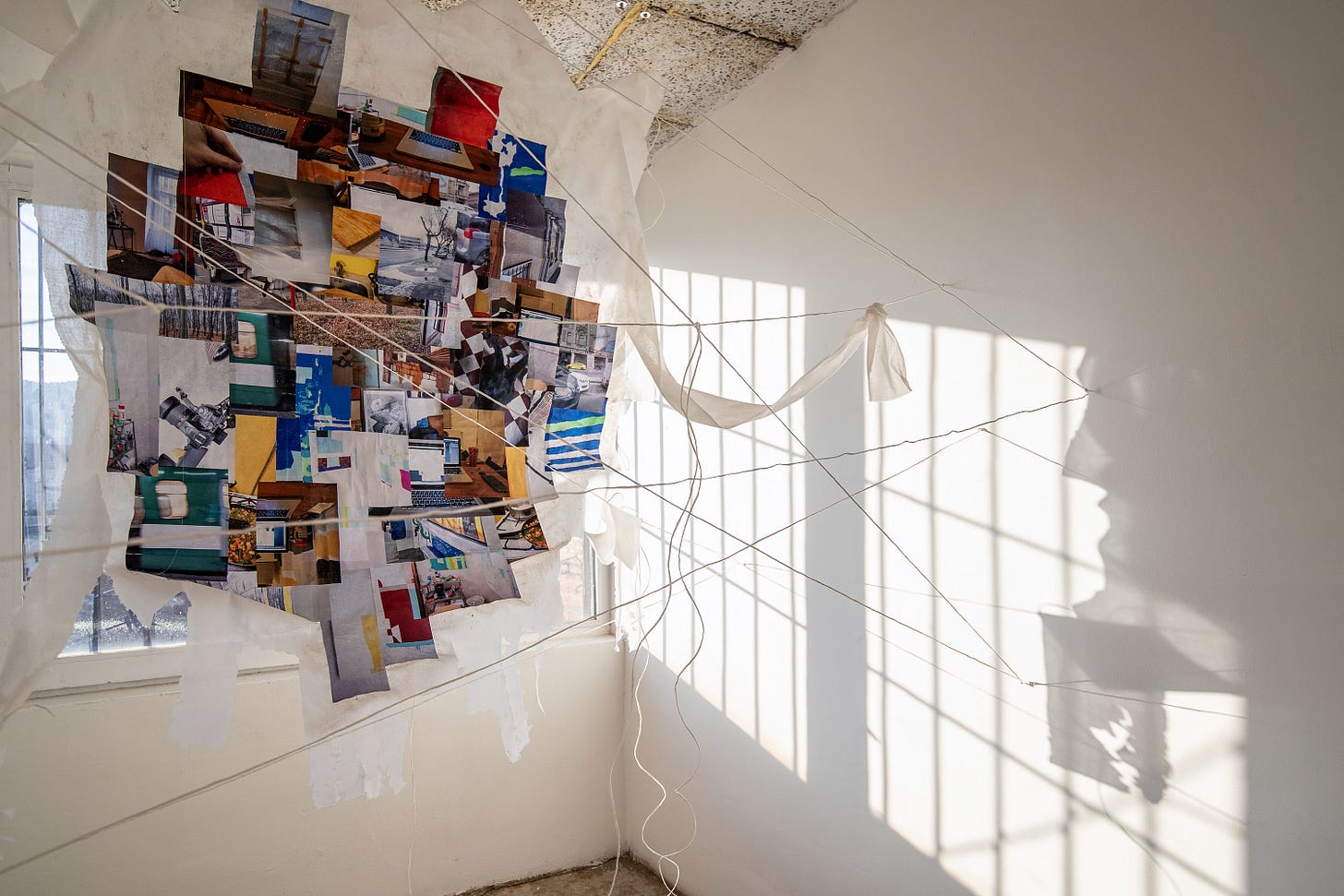KristofLab – Kristóf Szabó, solo exhibition
Godot Labor, 1036. Budapest, Fényes Adolf street.21. - 03/03/2021 to 05/09/09
Opening: Performance of the dancers of the Ziggurat Project with pieces from the joint collection of fashion designer Anna Sibitka and KristofLab. Dancers: Emese Kovács, Tímea Laza, Krisztián Szilágyi.
Curator: Luca Cserhalmi
Kristóf Szabó has been using the artist name KristofLab since 2016. The theme of his works is the state of the developed world, without the depiction of man. The socially critical formulation, or even the objective reporting of our present, is manifested in the depiction of the environment around us. His artistic practice is strongly characterised by creating transitions between the branches of art, the elimination of the boundaries between them, and collaboration with other arts forms.
His painting work, focuses on the urban environment and building. The robustness and style of the multi-storey residential or office blocks that appear in his paintings make it impossible to feel at home, yet these buildings provide a safe living space in an urban setting. From the solitude of KristofLab’s empty buildings, an abandoned and safe urban existence returns.
The works are dominated by buildings that we remain unnoticed in our every day life: no monuments, no historical or cultural significance, their designer has not won awards, yet they have a peculiar aesthetic of everyday life. They become invisible and dissolve in urban tissue in the same way that the crowd moving between them becomes faceless and monotonous. KristofLab captures the point of view of the city where there are no individuals, only characters that can face us anywhere in the world.
This is also emphasized by the constructivist pictorial solutions of his paintings. The use of unnatural, homogeneous colours removes the viewer from the gloomier reality and lends playfulness to the images with the vividness of the colours. Viewed from here, with all its absurdity, the urban medium seems like a huge playground. This free play of viewing is disrupted by visual elements that evoke digital distortion and screen error in paintings and photos. According to KristofLab’s pictures, there is a kind of disorder in our present society. In his works, nature also breaks into the products of civilization, which, accompanied by his will to live, haunts as a phantom in places from which he was in fact excluded by humanity.
In addition to the medium of the city, Kristóf is also occupied with the role of the natural environment in the modern world and its changes. Landscapes are transforming. The human footprint is so united with the natural environment that “untouched area” has become a separate concept, and human presence can be felt everywhere. The burningly pressing problems of pollution and unmanageable waste production are forcing humanity to redesign, where care must become the norm instead of one-time convenience.
This line of thought appears in KristofLab’s PolyMER series. Classical paintings in their style evoke the era of “plain-air” painting, when the painter could still retreat into untouched nature. However, KristofLab’s waste applications dispel the former idyll, cover the image, frustrate and confuse. While the undisturbed landscape, arranged in the plane of the canvas, is the embodiment of an abstract, distant world, the trash used in the works erupt from the two dimensions and are placed in the space of reality. In the installation belonging to the PolyMER series, nature is merely presented as an artificially preserved image, a once documented data that tries to give the appearance of reality. In the work criticising the tendencies and possibilities of the present and at the same time of the future, nature is present only as a mild appearance, a semi-unrecognisable reflection.
The relationship between civilisation and nature is presented from a different perspective in the City and Nature and Abandoned Military Bulidings series presented in the same exhibition hall. The City and Nature section of the Wrong Data photo montage series juxtaposes the sometimes crisp and depressing view of the built-in urban environment with the image of lush nature. These two layers can be seen before and after as a parallel, or as a relationship between possibility and reality. Urbanisation and the industrial use and destruction of natural habitats, as well as the displacement of nature, pose an increasing threat to society, while in the distance from nature, people are also becoming more and more exhausted and frustrated.
The Abandoned Military Buildings series, as the title suggests, revives the world of abandoned military facilities. The buildings left here as dark memories of the past appear in forgotten places, often reclaimed by nature. KristofLab’s paintings look like black scars on structures that have lost their function, threatening to break the almost Edenian, idealistic landscapes. In the central installation, the imaging possibilities of the past and the present meet: an image made with a traditional painting process is displayed on the object next to it with the help of a webcam and a projector, creating a ghost spectacle, as we often cannot perceive the presence of abandoned military facilities as reality.
Questions to actors of community and finding individual responsibility are echoed in his latest international photo project, the Empty Space series. At the beginning of closures due to the epidemiological provisions, artists from different parts of the world sent photos to KristofLab of vacant cities and stagnant spaces to his Open Call. Using these, the Empty Space series was created, which is also a situation report and a collaboration relating to the global crisis. Due to the Covid-19 virus, the busy spaces have become vacant. The world came to a standstill, people stayed at home, so a kind of anomaly or mistake was created. In KristofLab’s paintings, the frozen world appears as a regenerating, resting organ, as one of the causes of the pandemic is accelerated life: travel and globalised trade, which has exploited our finite resources. The tension between the silence of these places and the global changes that are raging around us can be felt. The stillness of public spaces reflects the paralysis of humanity, while the world has been able to breathe for a short time from ever-increasing pollution.
As a further reflection of on this, the Apophenia project was born in 2021, in which KristofLab works with Berlin based artist Guillermo Rivadeneira. Through two audio-visual installations, the two artists tell their own stories about how they try to thrive in this often absurd medium, we can get an insight into their individual experiences and adaptation strategies, as the short manifesto of the project states:
“During the pandemic, we had to reorganise our human networks, our communication, our behaviour towards each other, our opportunities to connect. In our present society, a new way of life has become necessary, in which individuality is suppressed by the compulsion to adapt, our room for manoeuvre has been minimised, our everyday lives are organised according to templates, and our own visibility has also become an illusory presence. The motto of the new life is “happiness in despair”. What would be important to us was pushed out of the new world order, but what used to seem unreal came into being. ”
-Luca Cserhalmi
Get to know the artist:
In 2020, we aimed to publish our 11th Issue, however, due to the global pandemic, some changes had to be made and unfortunately, the publication of the said issue didn’t push through. Kristóf Szabó was one of the featured artists in our Issue 11, we conducted an interview with the artist, and looking back at it now, it is wonderful to see how things have blossomed from what was just a thought a year ago into something that has actually happened and continuing to grow.
Who or what inspires you to do your craft?
My art is inspired by a lot of things, but I basically deal with two main topics, both can be related to humanities. These are city, the living environment, the society and the people living in it. I combine these in the series shown here too. Wrong data is a kind of metaphor for the relationship between man and nature. Mapping our environment is a process that takes place in our brain, if a mistake slips into it, it creates disharmony. This is similar to when man breaks into nature, so we can see ourselvesas an error factor.
What is the biggest challenge you’ve experienced being an artist?
I am facing with bigger and bigger challenges that I raise for myself. If we think of a life period, the few years after uni were really testing for me. I had to build myself up very quickly after getting out of the “embracing” shell of the university. It was hard to thrive in real life without any background or safe ground. I also had to organize my own self-image and find stability to be able to find around 2016 what I have been doing still today since then.But back to the challenges. In the near future I plan to establish an international New Media Art mini festival in Budapest, this will certainly be the project in which I will have to invest the most energy so far.
How is your personality reflected in your work?
I come from the countryside and the block of flats, the housing estate was a defining experience for me. Probably this is the theme that goes back the longest, I also dealt with the city during uni, but now I have managed to create a world free of private mythology. I formulate sociological and environmental issues in these works, like the development of society, the relationship between man and nature, its subordinate attitude.Besides the social commitment, I have always been interested in experimenting with new forms. That is why I am constantly working in the field of interdisciplinarity, especially with Ziggurat Project, whose core is made up of dancers, and with whom I have already worked from Austria to Norway. I also adopted the artist name KristofLab, which can betraced back to the underground music sphere, as I work a lot with techno musicians and I also got involved in musical experimentations. The term Lab stands for laboratory. It works as a marker, it’s easier to stand out from the crowd with it. Since New Media Art became essential part of my works, the whole thing intertwined and by 2016 I stepped out of the “Kristóf Szabó” identity.
Current and Upcoming Exhibitions of the artist:
The relationship and interaction of the city, the individual and society is explained by the exhibition of works by Zsolt Asztalos, Balázs Csizik, Gusztáv Hámos, Katja Pratschke, Géza Kulcsár and Kristóf Szabó KristofLab.
What is the impact of human presence on the built environment? How is human presence and activity reflected in the different materials and forms of the city? How does the turmoil of urban life affect the individual and the psyche?
By circling concepts such as legacy tradition, past - present - future and psyche, the creators reflect on the city’s diversity and social interaction.
Opening 06.01.2021 – KÉK - Contemporary Architecture Centre , Budapest Hungary
Kortars Labor is a contemporary venue that’s main aim is to reach generation Z through cultural events and performances that will take place at the Miskolc Gallery and other underground spaces of the town. KristofLab is one of the invitees of July’s event who will perform at the opening exposition alongside various talented dancers and musicians. As nature is a reoccurring theme of the gallery, since the town itself is surrounded by the immense Bükk mountains, Kristóf’s series, “Waste” which represents the destructive nature of human, is a perfect addition to gallery’s vision. The ‘Empty Space’ and ‘M4’ series will allow the visitors wonder about the connection between genuine and human-made environment, and explore the feeling of seeing familiar places empty due to the pandemic.
Opening 07.17.2021 – Miskolc Gallery, Miskolc Hungary
FOR MORE INFORMATION ABOUT THE ARTIST, VIEW OR CONTACT:
Gallery representation – Godot Labor: https://www.godotlabor.hu
Works.io: https://www.works.io/kristof-szabo
Art Conscious: https://artconscious.co.uk/artist/kristof-szabo
Ziggurat Project: http://zigguratproject.com/members#/kristof-szabo/
Studio: Art Quarter Budapest / Budapest, Nagytétényi street 48-50, 1222
Phone number: +3620 2353643

